
Data visualisation
from a communication perspective
Mikel Madina & Miren Berasategi
European Data Incubator
Bilbao, 9th November 2018
- Data visualisation as an artefact
- The atomic level
- Number of variables
- Generating new idioms
- Multiple Linked Views
- Beyond 2 dimensions
- Other senses
- Data visualisation as a communication product
- What charts say
- What charts mean
- What charts do
- The artefact goes social
- Data counseling
- Responsive data visualisation
1. Data visualisation
as an artefact
artefact (US artifact) noun
1 An object made by a human being, typically one of cultural or historical interest.
‘gold and silver artefacts’
2 Something observed in a scientific investigation or experiment that is not naturally present but occurs as a result of the preparative or investigative procedure.
‘the curvature of the surface is an artefact of the wide-angle view’
The Oxford Dictionary of English
1. Data visualisation as an artefact The atomic level
Maximum data density is 1:1, and this is not usually the case:
| data points | < | pixels |
| observations |
1. Data visualisation as an artefact The atomic level
Some strategies to overcome this constraint:
- Filter observations
- Split data into multiple charts
- Augmenting visualisations
- Densify
1. Data visualisation as an artefact The atomic level
1. Filter observations
- By design, communicating a selection of data
- By allowing the user to filter according to their interests
- Innovative filtering (i.e. Smart brushing)
1. Data visualisation as an artefact The atomic level
2. Split data into multiple charts
Facets, trellis, small multiples.
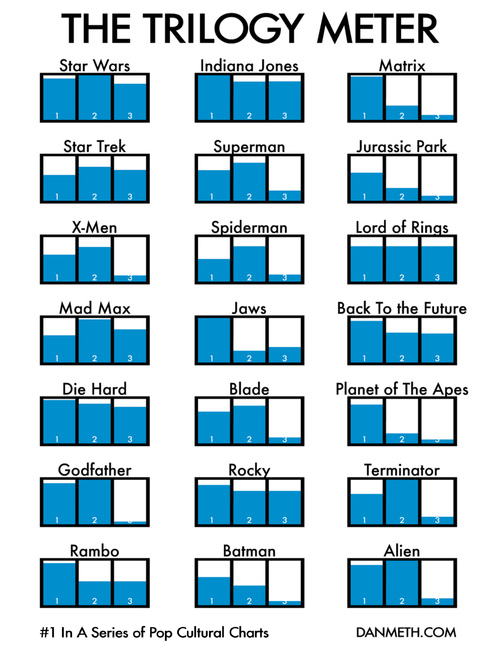
1. Data visualisation as an artefact The atomic level
3. Augmenting visualisations

1. Data visualisation as an artefact The atomic level
4. Densify
- Escaping overplotting in scatterplots

1. Data visualisation as an artefact The atomic level
4. Densify
- Escaping overplotting in scatterplots

1. Data visualisation as an artefact The atomic level
4. Densify
- Escaping overplotting in scatterplots
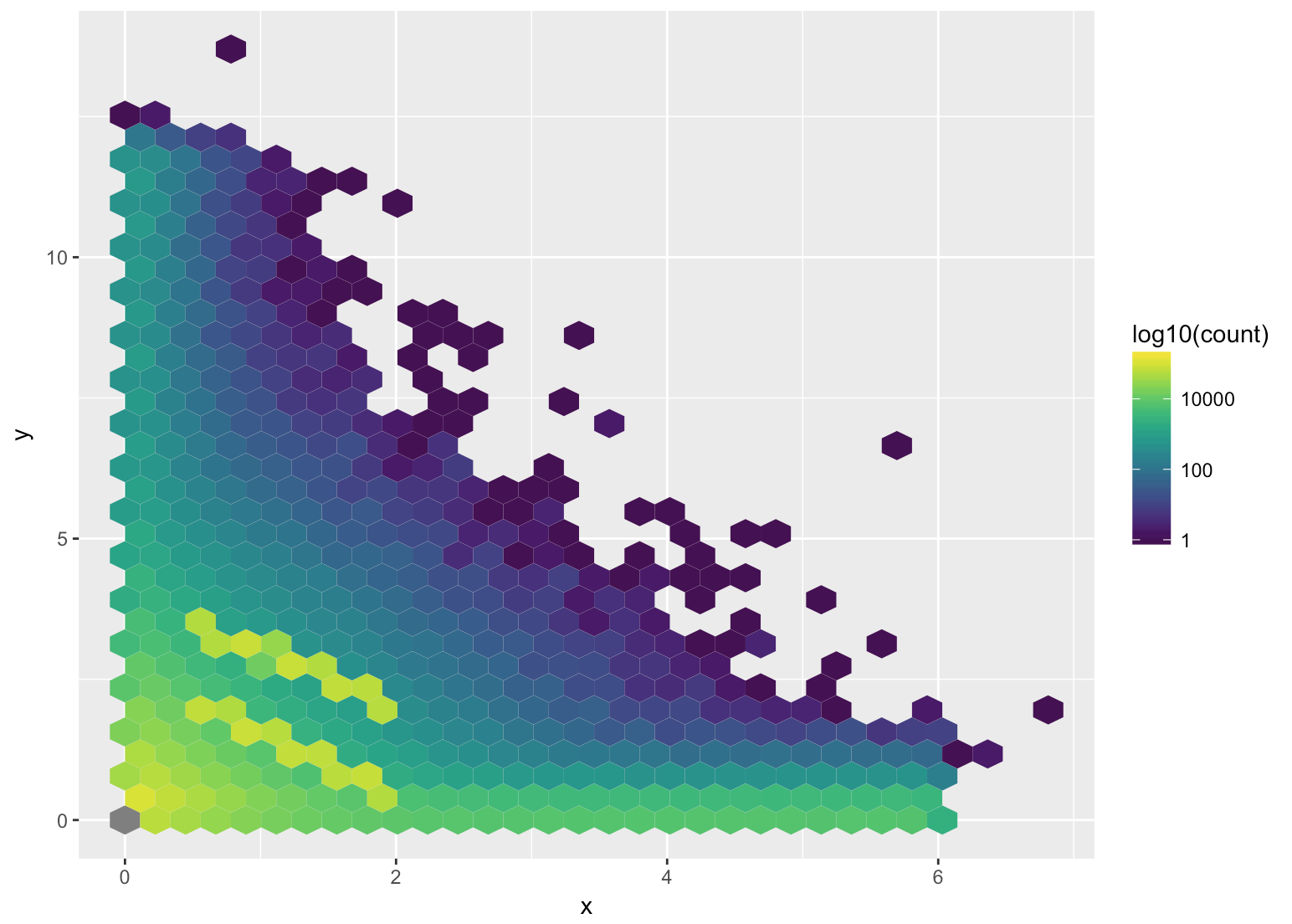
1. Data visualisation as an artefact The atomic level
4. Densify
- Timelines
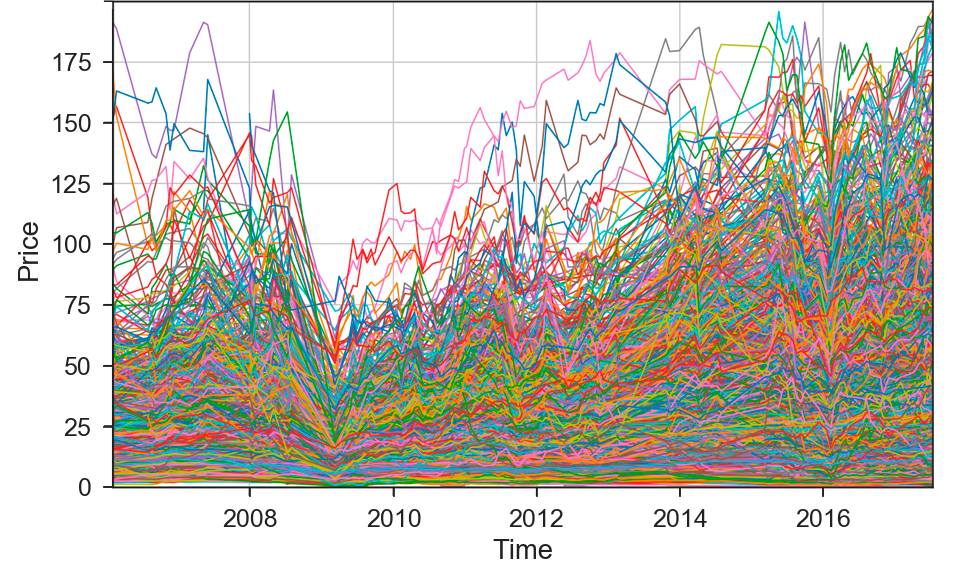
1. Data visualisation as an artefact The atomic level
4. Densify
- Timelines

1. Data visualisation as an artefact The atomic level
Adding the time factor:
- Static visualisations with real data (at the time of loading)
- Real-time visualisations, static and auto-refreshed
- Streaming data visualisations showing the flow of data
Require an additional effort for operational intelligence, where immediate decision making could be a requirement.
Source: Aragues 2018
1. Data visualisation as an artefact The atomic level
How to communicate nothingness? (Kirk 2014)
1. Data visualisation as an artefact The atomic level
How to communicate nothingness?
- Null Absence of measurement
- Zero Absence of amount/magnitude
- Blank Try to use nothing to represent something
1. Data visualisation as an artefact The atomic level
How to communicate nothingness?
- Null Absence of measurement
- Zero Absence of amount/magnitude
- Blank Try to use nothing to represent something
- The design should be invisible
1. Data visualisation as an artefact The atomic level
Communicating uncertainty, projections,
and other non-factual data is challenging.
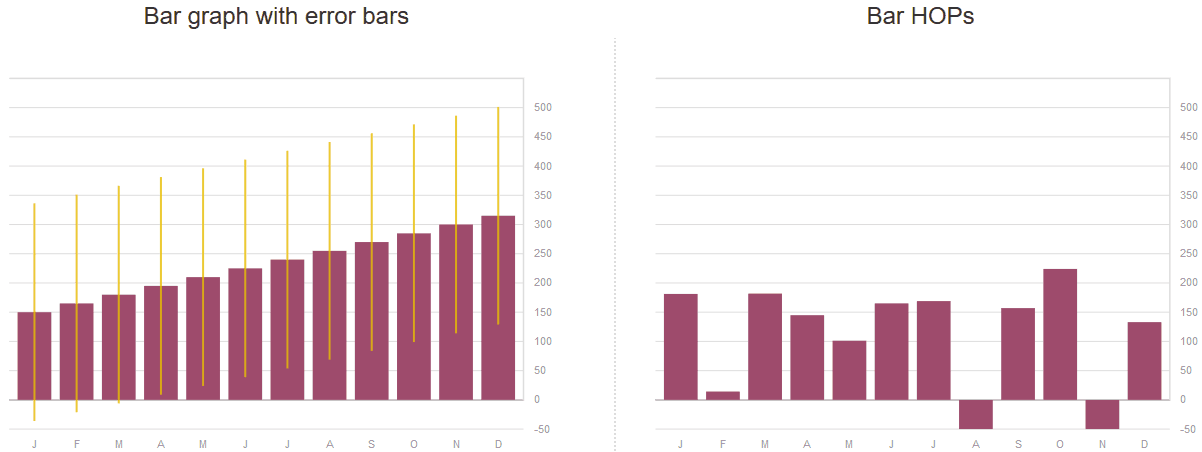
1. Data visualisation as an artefact Number of variables


1. Data visualisation as an artefact Number of variables
It is required to reduce dimensionality (statistically): PCA, factors, clustering.
1. Data visualisation as an artefact Generating new idioms
A word of caution:
- will need to be custom coded
- readers will require training
- correct interpretation may be more time demanding
Xenographics: Weird but (sometimes) useful charts
1. Data visualisation as an artefact Generating new idioms

1. Data visualisation as an artefact Generating new idioms

tricolore (Schöley 2018)1. Data visualisation as an artefact Generating new idioms
1. Data visualisation as an artefact Multiple Linked Views (MLV)
In a MLV system, a dataset is shown in multiple simple visualizations, with the data items shown in the different charts corresponding to each other. The charts in each visualization can be used to highlight, control, or filter the data items shown in the others.
(Meyer & Fihser 2018)
(Lagner, Kister & Dachselt 2019)
1. Data visualisation as an artefact Beyond 2 dimensions
virtual / augmented reality
1. Data visualisation as an artefact Other senses

1. Data visualisation as an artefact Other senses
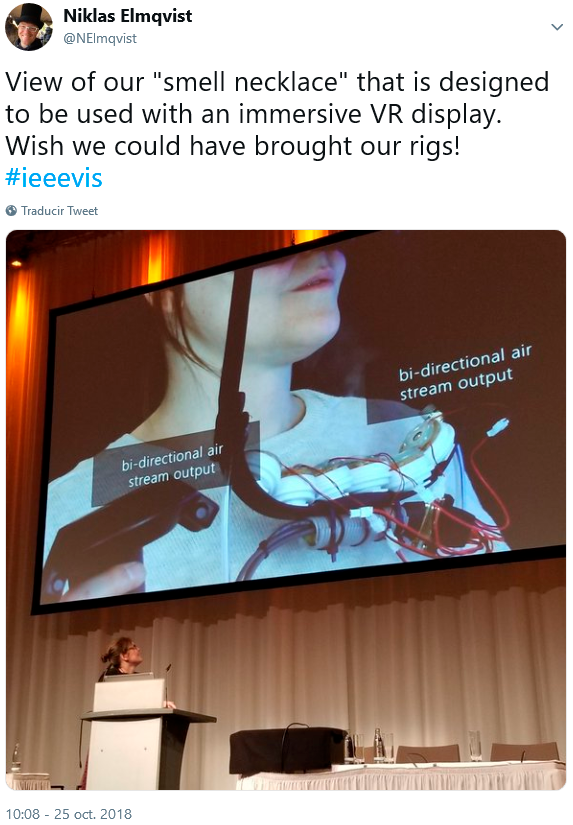
2. Data visualisation as
a communication product
2. Data visualisation as a communication product
The modern approach to data visualisation is focused on quickly making data visualisation.
(Meeks 2018)
2. Data visualisation as a communication product
Focus on speed affects:
- how data visualisation products are designed
- what tools are used to create them
- the role of the creator in relation to the product
- how engagement with readers in envisioned
2. Data visualisation as a communication product
Ultimately, data visualisation is not a technical problem, it’s a design problem and, more than that, a communication problem.
(Meeks 2018)
Let’s look at what charts say, mean, and do.
2. Data visualisation as a communication product What charts say
Explicitly
Charts do “show me the data” (but remember that it’s more that they tell the data than actually show it).
Means chosing the right specific chart to use in order to display and query the data.
How to improve: Expose data cleanly and clearly. Accuracy vs. precision.
2. Data visualisation as a communication product What charts say
Implicitly
No chart is an unbiased view of the data, as data visualisation is a manufactured artefact.
All data is transformed to be in a chart, and the inaction of not designing that transformation carries just as strong an implication as the action of transforming it.
(Meeks 2018)
2. Data visualisation as a communication product What charts say
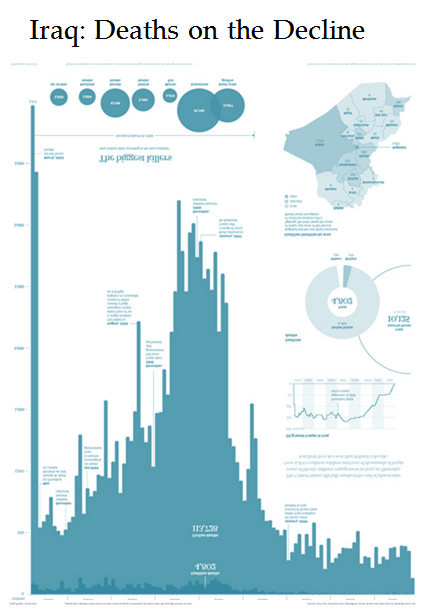
|
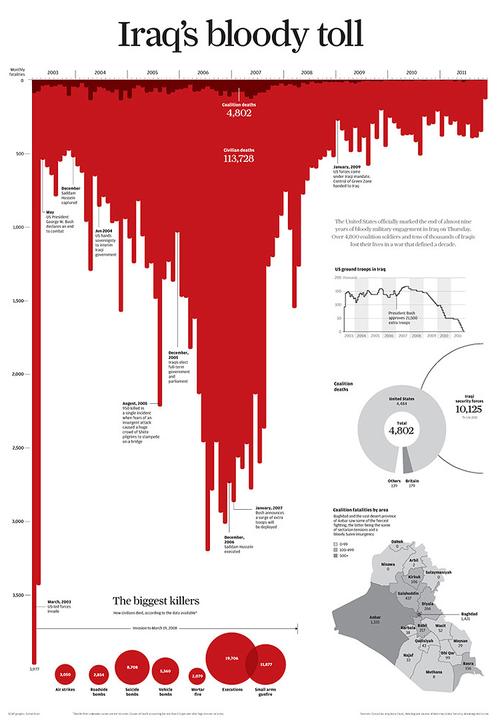
|
2. Data visualisation as a communication product What charts say
Implicitly
The implicit channel of a data visualisation (the title and other framing elements) can be even more powerful than the explicit channel.
How to improve: Style should be intentional, purposeful and thematically appropriate, not the result of defaults or superficial decisions.
2. Data visualisation as a communication product What charts say
Systematically
[…] all charts display data and all data is a proxy for the systems that created and measured that data.
(Meeks 2018)
How to improve: Caution not to reveal an underlying system that is proprietary or confidential.
2. Data visualisation as a communication product What charts say
Descriptively
- internally: axes, labels, annotations
- externally: surrounding text, figure descriptions, discussions
Unlike the implicit channel, the descriptive channel is active and purposeful (not subconscious).
How to improve: Consider annotations, labels, axis elements as part of the data visualisation.
2. Data visualisation as a communication product What charts say
By being more explicit in our own understanding of what charts say and how we can systematically describe what they say, we can grow more capable of using the channels available in that expression to our advantage.
(Meeks 2018)
What does your chart say that you didn’t intend?
2. Data visualisation as a communication product What charts mean
Intentionally
The mode and purpose of a chart should be well understood by the chart maker and immediately apparent to the chart reader.
(Meeks 2018)
2. Data visualisation as a communication product What charts mean
Historically
Charts are products of their time.
It is important to provide background about the data sources, to enable checking whether they are still based on relevant priorities, dimensions and metrics.
2. Data visualisation as a communication product What charts mean
Historically

2. Data visualisation as a communication product What charts mean
Culturally
Charts should be adapted to the culture they will be consumed in (think user-centered design techniques).
2. Data visualisation as a communication product What charts mean
Contextually
Enable removing and adjusting data visualisation elements to reduce complexity, not based on screen size as in responsive data visualisation, but on priority.
2. Data visualisation as a communication product What charts mean
Meaning-making may sound too soft to the kind of technical professionals that make and read data visualisation but communication without meaning is just noise.
(Meeks 2018)
2. Data visualisation as a communication product What charts do
The most important thing about a chart is its impact.
2. Data visualisation as a communication product What charts do
Provide insights
Identify and emphasize the insights that the readers might expect.

which may be considered insights by an audience (Meeks 2018)
2. Data visualisation as a communication product What charts do
Cause change
As difficult to measure as it is important.
How have they impacted business decisions? How were they used in presentations? Where they modified (changed colours, cropped, annotated) somehow?
2. Data visualisation as a communication product What charts do
Cause visual literacy
All data visualisation was, at some point, complex data visualisation, until an audience grew comfortable and literate enough to read it.
(Meeks 2018)
2. Data visualisation as a communication product What charts do
Cause visual literacy
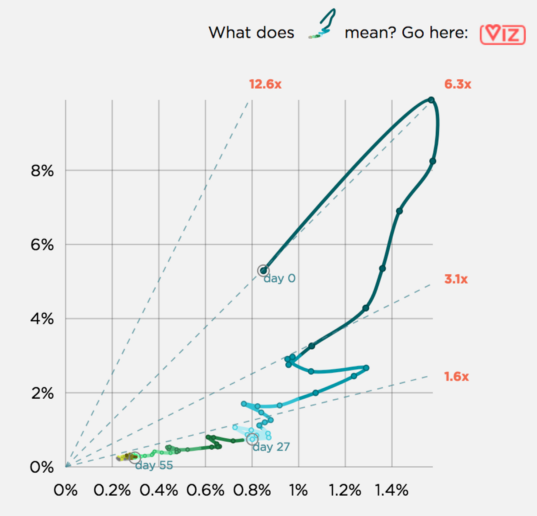
2. Data visualisation as a communication product What charts do
Create new charts
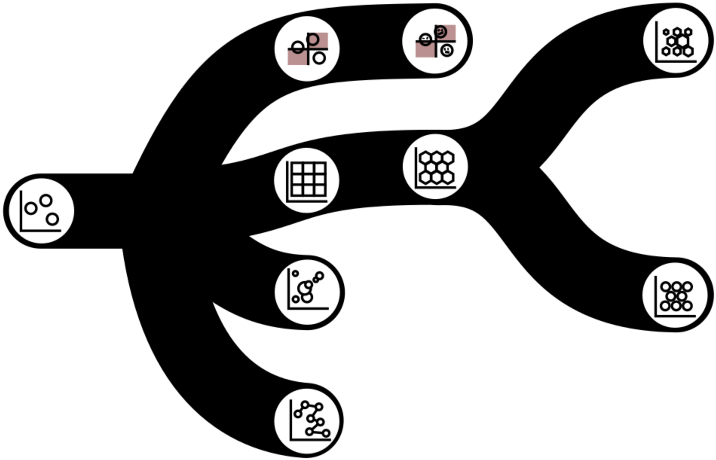
2. Data visualisation as a communication product What charts do
All communication is evaluated based on content, but persuasive communication, which is all data visualisation unless it is purely decorative, is rightly also evaluated based on effect.
(Meeks 2018)
3. The artefact
goes social
3. The artefact goes social Data counseling
[…] brings domain expertise into the operationalization process to help inform decisions about good proxies as well as to uncover insights using the resulting visualisations.
(Meyer & Fisher 2018)
3. The artefact goes social Data counseling
Based on interviews (1) for
- gaining an understanding of the questions and data
- get feedback on proxies, explorations, and visualisation prototypes (2)
3. The artefact goes social Data counseling
Interviews
The role of the interviewer is to ask questions that will guide the stakeholders toward elucidating the information necessary for working through an operationalization process and designing visualisations.
(Meyer & Fisher 2018)
3. The artefact goes social Data counseling
Interviews
Identify stakeholders:
- analysts
- data producers
- gatekeepers
- decision makers
- connectors
3. The artefact goes social Data counseling
Interviews
Require practice and experience.
Semistructured: be prepared, but also be open.
- start with open ended questions (problem, data, context)
- use the conversation to search out the more abstract question
3. The artefact goes social Data counseling
Interviews
Use traditional conversation / interpersonal communication skills to prevent dead ends: keep them talking
- rephrase responses back to the stakeholder
- ask the same or similar questions in different ways
- explore a completely different conversational topic
3. The artefact goes social Data counseling
Interviews
Contextual interviews
- take place in the stakeholder’s work environment
- consist of demonstrations of the tools and data inspection methods currently in use
3. The artefact goes social Data counseling
Rapid prototyping
[…] is a process of trying out many visualisation ideas as quickly as possible and getting feedback from stakeholders on their efficacy.
(Meyer & Fisher 2018)
3. The artefact goes social Data counseling
Rapid prototyping
≠ fast data visualisation
≈ agile/lean methodologies
and user-centered design
3. The artefact goes social Data counseling
Rapid prototyping

3. The artefact goes social Data counseling
Rapid prototyping
Prototypes are made to obtain feedback on them: get to the stakeholders early and often.
Focus not on whether they like it or not, but rather on what the visualisation can and cannot do (contextual interview where the stakeholder uses the visualisation).
3. The artefact goes social Responsive data visualisation
Responsive web design, and responsive data visualisation are not simply a way to make our content accessible on smaller screens. We need to build an ergonomic web that feels natural regardless of device type.
(Hinderman 2018)
3. The artefact goes social Responsive data visualisation
Unknowns require adaptability.
- the context in which the user is trying to consume the visualisation
- changes in the data that is being displayed
3. The artefact goes social Responsive data visualisation
Output side (the client)
Making things work in all screen types by redrawing charts to fit its container.
Match CSS breakpoints + add any new ones as the content requires: group data to fit (trade-off precision for reduced rendering complexity and performance).
3. The artefact goes social Responsive data visualisation
Input side (the data)
Adapting at breakpoints. No need to just redraw the exact same elements:
As long as the message being conveyed by the data is the same, and the point you’re trying to prove is always present, you should prove it with as much firepower as you have available.
(Hinderman 2018, p.361)
3. The artefact goes social Responsive data visualisation
Input side (the data)
Adapting at interaction points.
[…] present a rational default but enable users to dig into more complex or specific layers of data when the device’s capabilities limit the presentation of both at the same time.
(Hinderman 2018, p.362)
3. The artefact goes social Responsive data visualisation
Different views on heartreate depending on device:
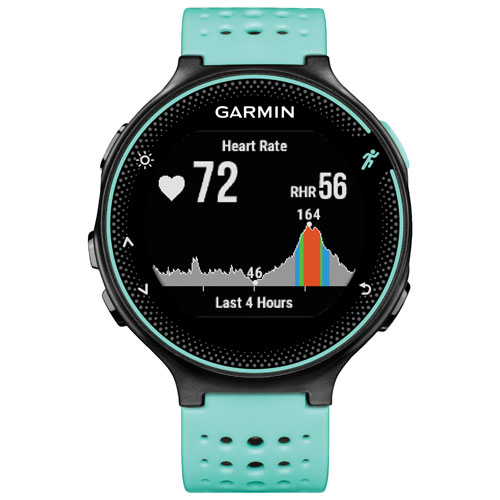
3. The artefact goes social Responsive data visualisation
Different views on heartreate depending on device:
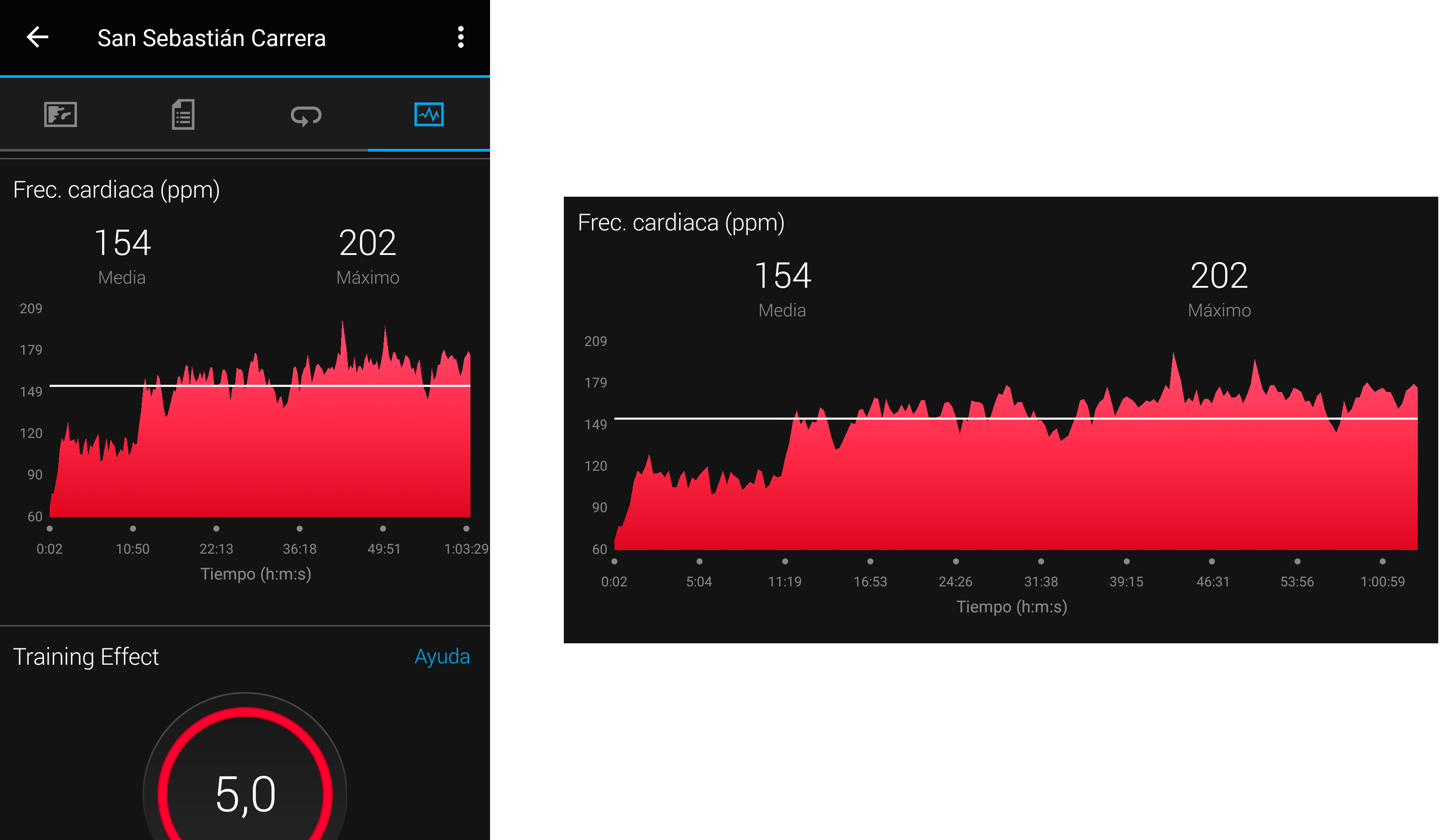
3. The artefact goes social Responsive data visualisation
Different views on heartreate depending on device:

3. The artefact goes social Responsive data visualisation

Epilogue
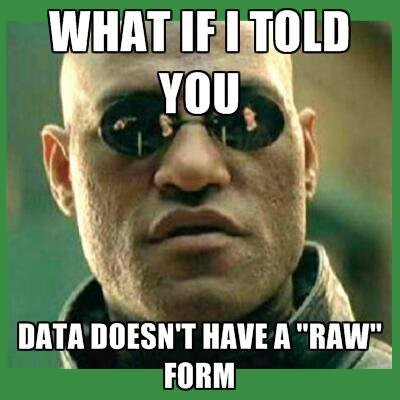
Thank you!
This presentation is available at
https://mrn.bz/BDAP2018
Resources
- D3.js
A JavaScript library for manipulating documents based on data. D3 helps you bring data to life using HTML, SVG, and CSS. - ggplot2
Data visualization package for the statistical programming language R. - IEEEVIS 2018
Conference on Scientific Visualisation, Information Visualisation and Visual Analytics. Papers from the 2018 edition. - matplotlib, seaborn
Just two of the many data visualisation libraries available for Python - Open Access Vis
A collection of open access visualisation research at the VIS 2018 conference. - Xenographics
Weird but (sometimes) useful charts.
References
Anthony Aragues (2018), Visualizing Streaming Data. O’Reilly Media
Tanja Blascheck, Lonni Besançon, Anastasia Bezerianos, Bongshin Lee, Petra Isenberg (2019). “Glanceable Visualization: Studies of Data Comparison Performance on Smartwatches”. IEEE Transactions on Visualization and Computer Graphics 25(1) 10.1109/TVCG.2018.2865142`
Matthew Brehmer, Bongshin Lee, Petra Isenberg, Eun Kyoung Choe (2019). “Visualizing Ranges over Time on Mobile Phones: A Task-Based Crowdsourced Evaluation”. IEEE Transactions on Visualization and Computer Graphics 25(1) 10.1109/TVCG.2018.2865234
Brendan Gregg (2016), “The Flame Graph”. ACM Queue 14(2)
Luc Guillemot (2018), “How Does This Data Sound?”
Jeffrey Heer, Nicholas Kong, Maneesh Agrawala (2009), “Sizing the Horizon: The Effects of Chart Size and Layering on the Graphical Perception of Time Series Visualizations”. ACM Human Factors in Computing Systems (CHI), pp. 1303 - 1312 10.1145/1518701.1518897
Bill Hinderman (2015), Building Responsive Data Visualization for the Web. O’Reilly
Christophe Hurter, Nathalie Henry Riche, Steven M. Drucker, Maxime Cordeil, Richard Alligier, Romain Vuillemot (2018), “FiberClay: Sculpting Three Dimensional Trajectories to Reveal Structural Insights”, IEEE Transactions on Visualization and Computer Graphics 25(1)
Alex Kale, Francis Nguyen, Matthew Kay, Jessica Hullman (2019), “Hypothetical Outcome Plots Help Untrained Observers Judge Trends in Ambiguous Data”, IEEE Transactions on Visualization and Computer Graphics 25(1)
Andy Kirk (2014), “The Design of Nothing: Null, Zero, Blank”, OpenVis Conference 2014
Ihor Kovalyshyn (2017), “When Scatter Plot Doesn’t Work”
Ricardo Langner, Ulrike Kister, Raimund Dachselt (2019). “Multiple Coordinated Views at Large Displays for Multiple Users: Empirical Findings on User Behavior, Movements, and Distances”, IEEE Transactions on Visualization and Computer Graphics 25(1) (proc. InfoVis 2018) 10.1109/TVCG.2018.2865235
Elijah Meeks (2017), “Strategic Innovation in Data Visualization Will Not Come From Tech”
— (2018), “Data Visualization, Fast and Slow”
Dan Meth (2009), “The Trilogy Meter”
Miriah Meyer & Danyel Fisher (2018), Making Data Visual. O’Reilly Media
Dominik Moritz and Danyel Fisher (2018), “Visualizing a Million Time Serieswith the Density Line Chart” arXiv:1808.06019v2 [cs.HC]
Tamara Munzner (2015). Visualization Analysis and Design. CRC Press
Jonas Schöley (2018), “Choropleth maps with tricolore”
Ronell Sicat, Jiabao Li. DXR: A Toolkit for Building Immersive Data Visualizations
License



Copyright © 2018 University of Deusto
This work (except for the quoted images, whose rights are reserved to their owners) is licensed under the Creative Commons “Attribution-ShareAlike” License. To view a copy of this license, visit http://creativecommons.org/licenses/by-sa/3.0/

